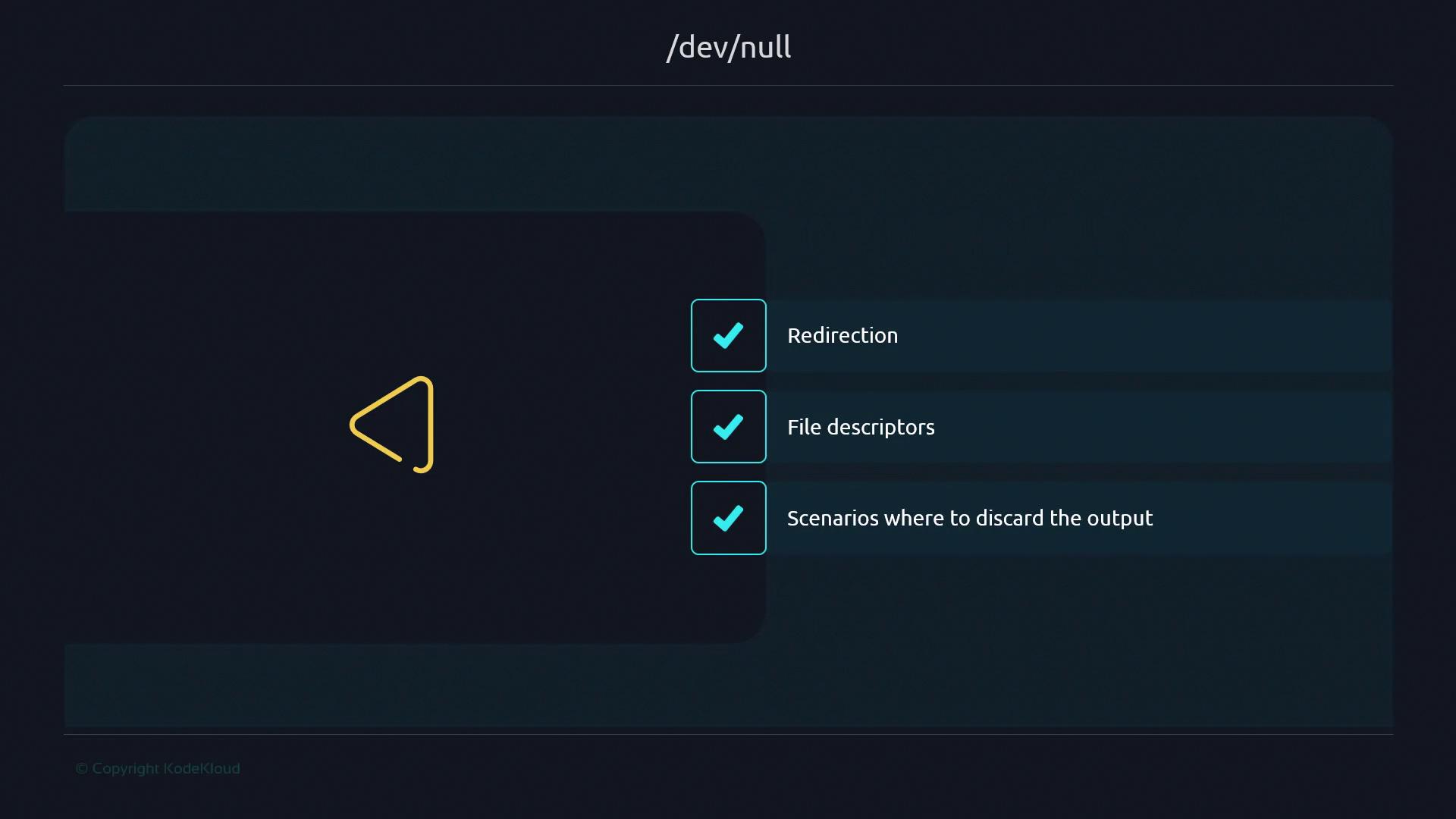Advanced Bash Scripting
Streams
devnull
Redirecting standard error (stderr) into standard output (stdout) is a powerful shell idiom that helps you capture or suppress all command output in one place. In this guide, we’ll start with basic redirection operators and build up to the full pattern:
2>&1
By the end, you’ll know how to merge streams, write them to files, and even discard them using /dev/null.
1. Basic redirection with >
A single greater‐than symbol sends a file descriptor to a file (or another stream):
$ ls > stdout.txt
- Left of
>is the source FD (default is 1, i.e. stdout). - Right of
>is the destination (often a filename).
You can explicitly specify the FD:
$ ls 1>stdout.txt # same as `ls > stdout.txt`
$ ls 2>stderr.txt # redirect stderr (fd 2) into stderr.txt
Note
When you omit the FD before >, Bash assumes 1 (standard output).
2. Merging stdout and stderr with &>
Bash provides a shorthand to capture both streams at once:
$ ls -z &> all-logs.txt
$ cat all-logs.txt
ls: cannot access '-z': No such file or directory
Here, &> is equivalent to >file 2>&1 in Bash.
3. Duplicating file descriptors using >&n
When & appears on the right side of >, you’re duplicating an FD instead of writing to a filename:
$ echo "warning" >&2 # send stdout (fd 1) into stderr (fd 2)
This is different from &> file.txt, which writes both stdout and stderr into a file.
4. Swapping streams with n>&m
You can redirect one FD into another:
Send stdout into stderr:
$ echo "warning" >&2Send stderr into stdout:
$ ls -z 2>&1 ls: cannot access '-z': No such file or directory
Warning
Order matters when combining redirections. Always redirect stdout first, then redirect stderr into it.
5. Redirecting both streams to a file
To capture both stdout and stderr in a single file, use:
$ ls -z > file.txt 2>&1
> file.txtsends stdout (fd 1) intofile.txt.2>&1redirects stderr (fd 2) into wherever stdout is now pointing.
6. Discarding all output with /dev/null
If you want a command to produce no output, redirect both streams to /dev/null, the special “black hole” in Unix-like systems:
> /dev/null 2>&1

Use this pattern when you need a silent command—no stdout, no stderr.

Key takeaways
| Operator | Purpose | Example |
|---|---|---|
>file | Redirect stdout (fd 1) to a file | ls > out.txt |
2>file | Redirect stderr (fd 2) to a file | ls -z 2>err.txt |
&>file | Redirect both stdout and stderr to a file | cmd &>all.txt |
n>&m | Duplicate FD n into FD m | echo "err" >&2 |
2>&1 | Merge stderr into stdout | cmd >out.txt 2>&1 |
> /dev/null 2>&1 | Discard both stdout and stderr | some_command > /dev/null 2>&1 |

Links and References
- Bash Redirections (GNU Manual)
- The Linux
/dev/nullExplained (StackOverflow) - Advanced Bash-Scripting Guide
Watch Video
Watch video content